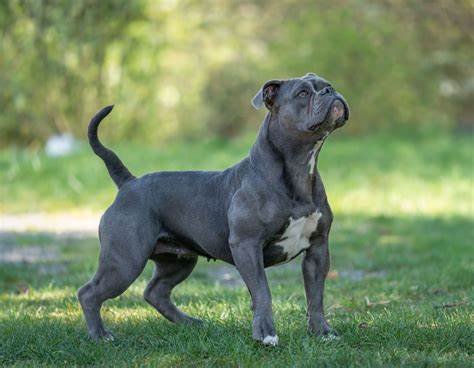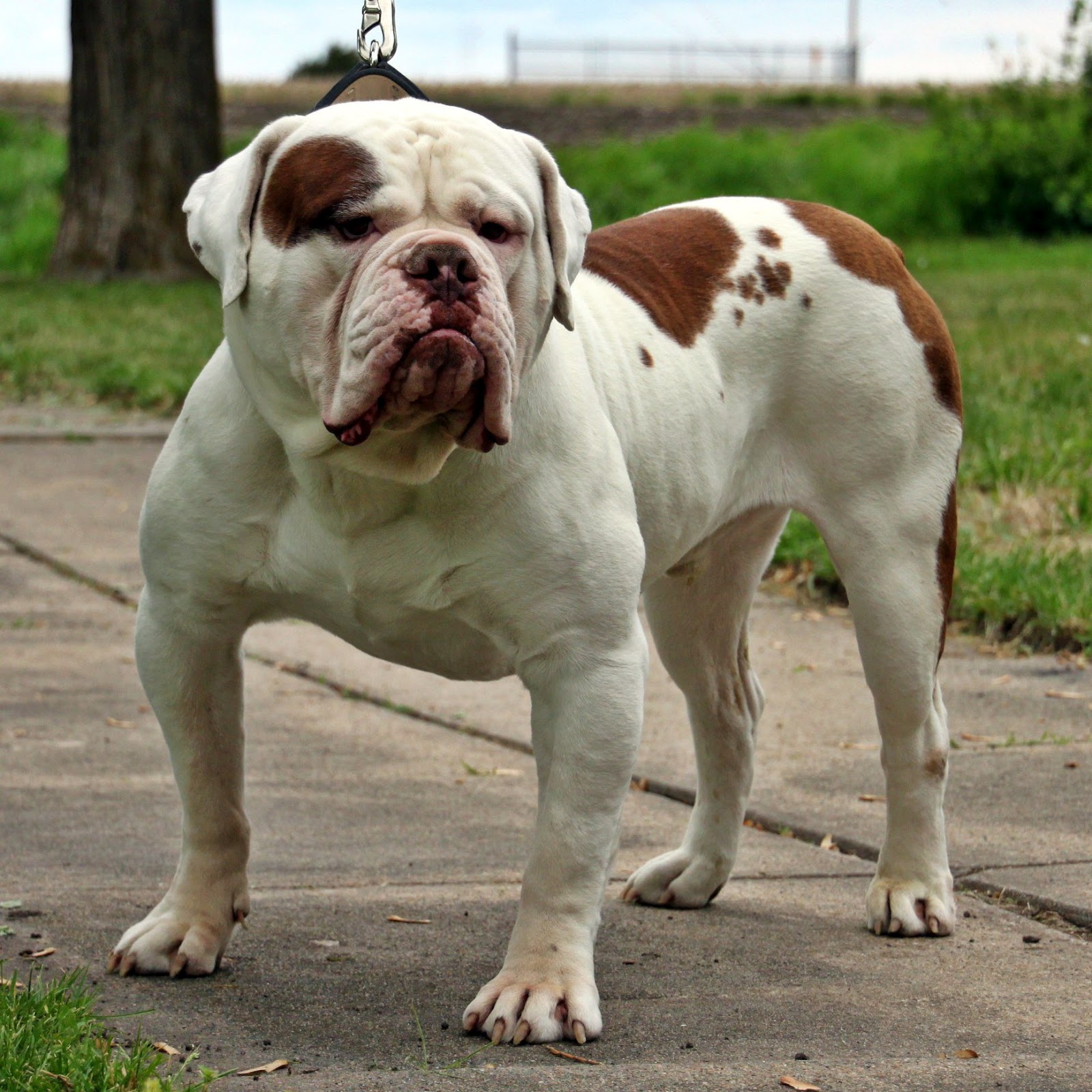
The Olde English Bulldogge is a modern recreation of a historic breed that dates back to 18th-century England. The original bulldog was bred for bull-baiting—an aggressive sport that demanded strength, tenacity, and courage. These early bulldogs were muscular, agile, and fearless, but the breed eventually morphed into the modern English Bulldog—compact, docile, and less athletic.
In the 1970s, American breeder David Leavitt sought to revive the athleticism and health of the original bulldogs while maintaining a gentle temperament. He crossed English Bulldogs with Bullmastiffs, American Bulldogs, and American Pit Bull Terriers. The result was the Olde English Bulldogge (OEB): a breed that physically resembles the original bulldog but is healthier and more family-oriented.
Today, the Olde English Bulldogge is recognized by several registries, including the United Kennel Club (UKC), and is cherished for its blend of classic bulldog toughness and modern-day friendliness.
While not as mainstream as the English or French Bulldog, the Olde English Bulldogge has built a devoted following. Many owners seek out the breed for its improved health profile, athletic ability, and loyal companionship.
It’s especially popular with families and individuals looking for a bulldog-type dog without the respiratory or joint issues often seen in more compact bulldogs.
The Olde English Bulldogge is a muscular, medium-sized dog that exudes strength and confidence.
Coat:
Short, smooth, and dense. Requires minimal grooming.
Color:
Wide variety including brindle, fawn, white, black, red, and pied. Patterns and combinations are common.
Size:
• Height: 16–20 inches (41–51 cm)
• Weight: 50–80 lbs (23–36 kg)
Build:
Athletic and powerful with a wide chest, strong limbs, and a thick neck. More agile and proportionate than the modern English Bulldog.
Head and Face:
Broad skull with a moderately short, square muzzle. Fewer wrinkles than the modern bulldog. Slight underbite is typical but not extreme.
Eyes and Ears:
Eyes are round and set low. Ears are rose or button-shaped, adding to the breed’s classic bulldog expression.
Despite its rugged appearance, the Olde English Bulldogge is known for its steady temperament and devotion to family.
Confident and Calm:
Carries itself with a calm confidence. Rarely aggressive without cause.
Loyal and Protective:
Deeply attached to its family and naturally protective, making it a good watchdog.
Good-Natured and Affectionate:
Gentle with children and often quite cuddly with loved ones.
Moderate Energy Level:
Enjoys regular activity and play but doesn’t require extensive exercise to stay happy.
Trainable but Stubborn:
Intelligent, but can display bulldog stubbornness. Consistent, positive training works best.

Improved Health and Mobility:
Bred specifically to reduce the breathing, skin, and joint issues seen in modern bulldogs.
Strong but Sweet:
A great balance of toughness and tenderness. Good with kids and suitable for family life.
Protective Nature:
Instinctively watches over its home, but not prone to unnecessary aggression.
Unique Appearance:
Offers the classic bulldog look with more athleticism and function.
Training:
Start early with basic obedience and socialization. Positive reinforcement helps keep their attention.
Exercise Needs:
Requires moderate daily activity—walks, play sessions, or short hikes. Avoid overexertion in high heat due to their short muzzle.
Grooming:
Very low maintenance. Weekly brushing and occasional baths keep the coat clean. Clean facial folds if present.
Living Space:
Adaptable to apartments or houses. Prefers indoor living with plenty of human interaction.
One of the breed’s biggest selling points is its improved health compared to traditional bulldogs. However, some health risks still exist:
• Hip dysplasia
• Elbow dysplasia
• Bloat
• Skin irritation (especially in folds)
• Mild brachycephalic traits (though less extreme than the English Bulldog)
Responsible breeders perform health screenings to minimize these risks. Lifespan typically ranges from 10 to 14 years.

Compared to the English Bulldog:
The Olde English Bulldogge is taller, more athletic, and has fewer health concerns. Temperamentally, it’s more active and agile.
Compared to the American Bulldog:
OEBs are stockier and less high-strung. They strike a balance between calmness and protectiveness.
Compared to the French Bulldog:
Frenchies are smaller and more apartment-friendly, but the OEB is better suited to active families and protection roles.
Choose an Olde English Bulldogge if:
• You want a bulldog-style dog with improved health and athleticism
• You’re looking for a devoted, protective family pet
• You like the bulldog temperament but want fewer maintenance issues
• You enjoy moderate activity and interactive companionship
Not Ideal For:
• People with very limited space or who prefer toy breeds
• Households that cannot handle a strong, stubborn dog
• Extremely hot climates without proper cooling options
The Olde English Bulldogge pays homage to a bygone era of canine power and agility—but with a gentler, healthier, and more companionable spirit. With its strong physique, noble temperament, and loyal heart, the OEB makes an excellent partner for those seeking a dog that’s both tough and tender.